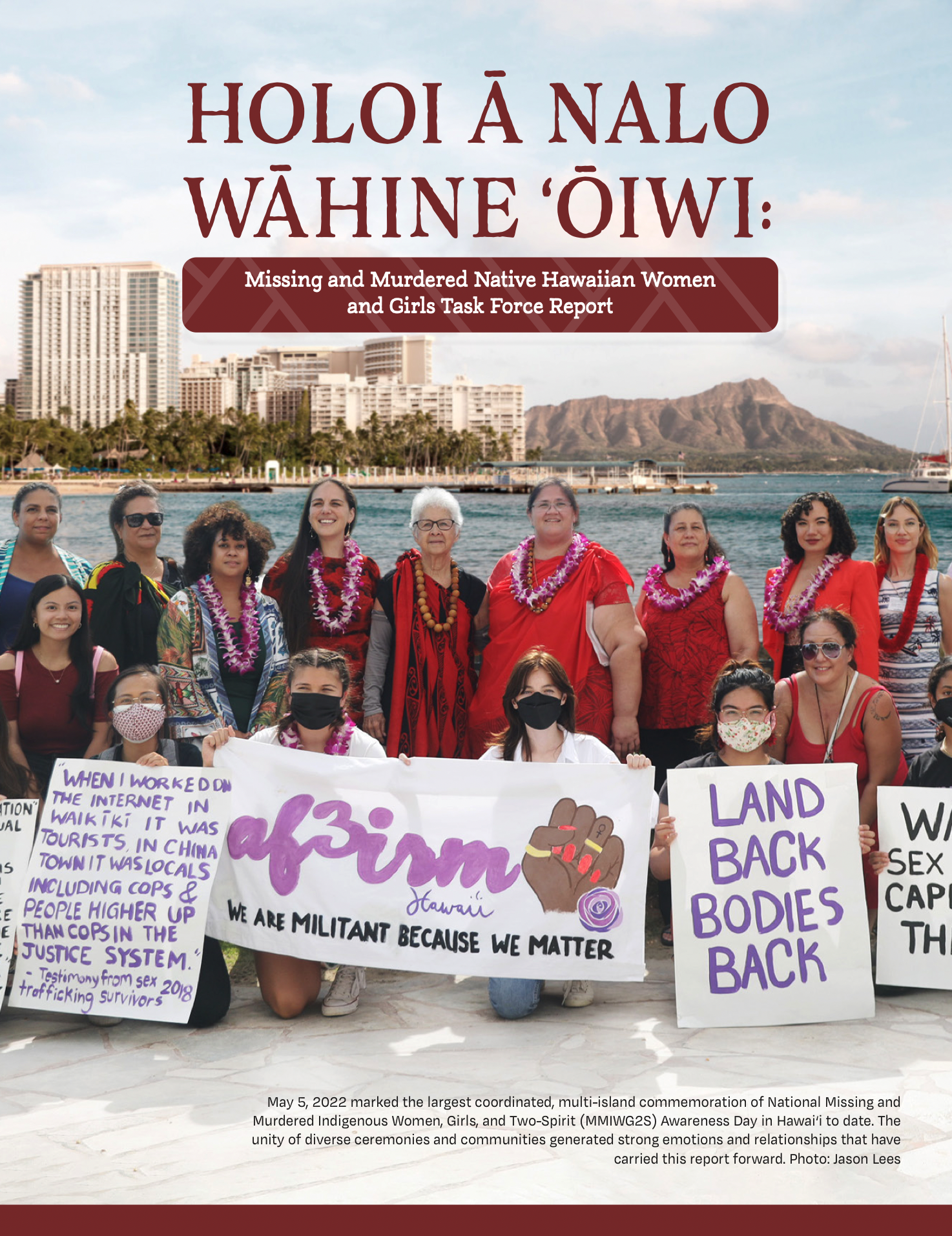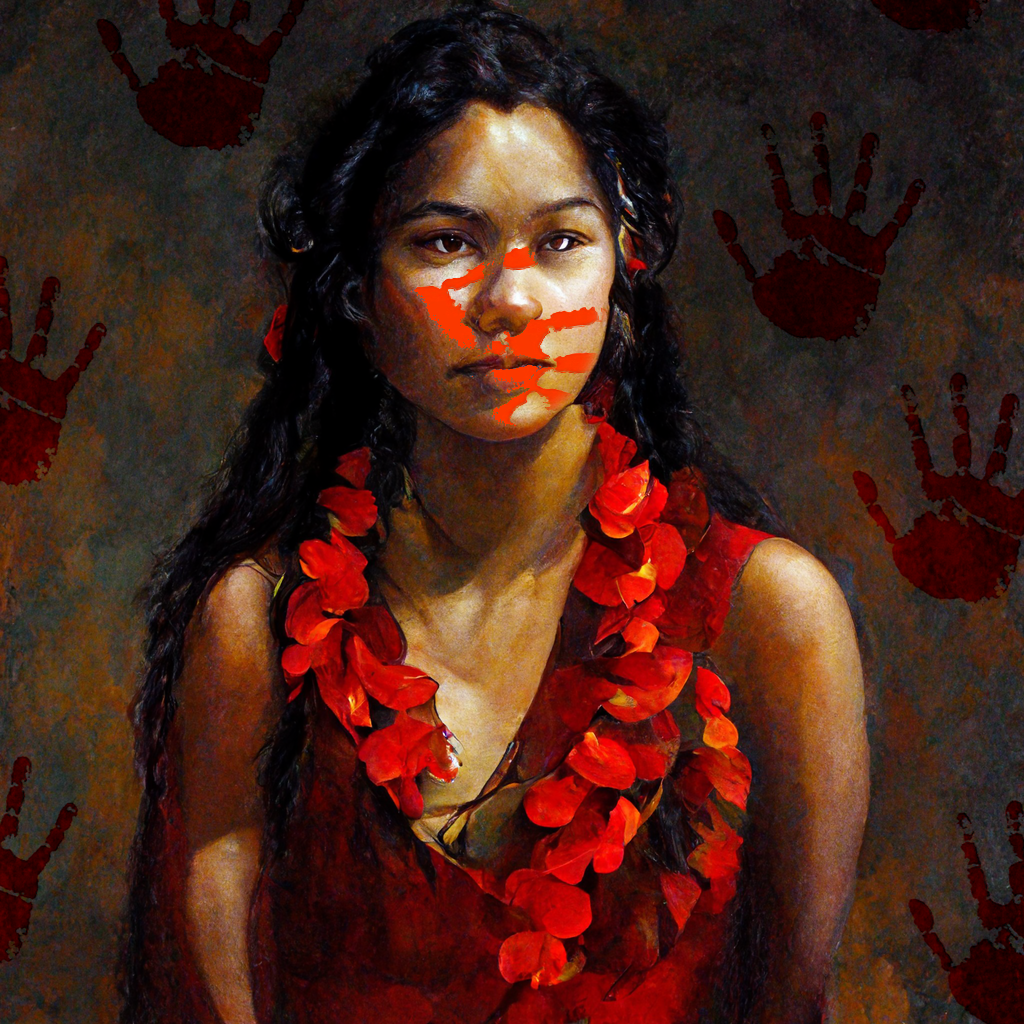Missing & Murdered Native Hawaiian Women and Girls (MMNHWG) Report
Pursuant of H.C. R. 11, the creation of a task force to research Missing & Murdered Native Hawaiian Women and Girls (MMNHWG) in Hawaiʻi was convened representing over 22 governmental and nongovernmental agencies and Co-Chaired through the Office of Hawaiian Affairs and the Hawaiʻi Commission on the Status of Women. This report is a part of the International Missing & Murdered Indigenous Women, Girls, and Two-Spirit (MMIWG2S) Movement.
Released in December 2022
Mahalo to Papa Ola Lōkahi for support in generating the first report.
Kamāwaelualani is in partnership with the Urban Indian Health Institute (UIHI) to generate the Missing & Murdered Native Hawaiian Women and Girls (MMNHWG) Report Part II which will be released in December 2023.
Report (Part 1)
Highlights
More than a quarter (1/4) of missing girls in Hawai‘i are Native Hawaiian (JJIS, 2001- 2021).
Hawai‘i has the eighth highest rate of missing persons per capita in the nation at 7.5 missing people per 100,000 residents (Kynston, 2019).
The average profile of a missing child: 15 year old, female, Native Hawaiian, missing from O‘ahu (MCCH, 2022).
The majority (43%) of sex trafficking cases are Kānaka Maoli girls trafficked in Waikīkī, O‘ahu (Amina, 2022).
38% (N= 74) of those arrested for soliciting sex from a thirteen-year-old online through Operation Keiki Shield are active-duty military personnel (Hawai‘i Internet Crimes Against Children Task Force, 2022).
In 2021, the Missing Child Center Hawai‘i (MCCH) assisted law enforcement with 376 recoveries of missing children. These cases are only 19% of the estimated 2,000 cases of missing children in Hawai‘i each year (MCCH, 2021).
On Hawai‘i Island, Kānaka Maoli children ages 15-17, represent the highest number of missing children’s cases, with the most children reported missing in area code 96720, Hilo (Hawai‘i Island Police Department, 2022).
From 2018-2021, there were 182 cases of missing Kānaka Maoli girls on Hawai‘i Island, higher than any other racial group (N= 1,175) (Hawai‘i Island Police Depart- ment, 2022).
57% of participants served through the Mana‘olana Program at Child & Family Services are Native Hawaiian females who have experienced human trafficking (Mana‘olana, CFS, 2021-2022).
Past Events
If you or someone you know needs support:
Hawaiʻi 24/7 Help Lines:
Crisis Textline: Text ALOHA to 741741
Crisis and Suicide Hotline:: 1-808-832-3100
Child Trafficking Hotline: 1-808-832-1999
Child Abuse & Neglect Hotline: 1-808-832-5300
Adult Abuse Hotline: 1-808-832-5115
Trafficking Victim Assistance: 1-808-721-9614
Sex Abuse Treatment Center: 1-808-524-7273
YWCA of Kauaʻi Hotline: 1-808-245-6362
Women Helping Women Domestic Violence Hotline (Maui): 1-808-579-8581
Molokai Community Service Council Domestic Violence Hotline (Molokai): 1-808-567-6888
PACT ʻOhia Domestic Violence Shelter Crisis Line (Oʻahu): 1-808-526-2200
Emergency: 911
National 24/7 Help Lines:
Suicide and Crisis Hotline: 988
Suicide and Crisis Textline: Text "HOME" to 741-741
National Human Trafficking Hotline: 1-888-373-7888
National Human Trafficking Textline: Text “HELP” to 233-733 (BEFREE)
National Center for Missing and Exploited Children: 1-800-THE-LOST (843-5678)
National Domestic Violence Hotline: 1-800-799-7233
National Domestic Violence Textline: Text “START” to 88788
Trevor Lifeline (LGBTQI+): 1-866-488-7386








